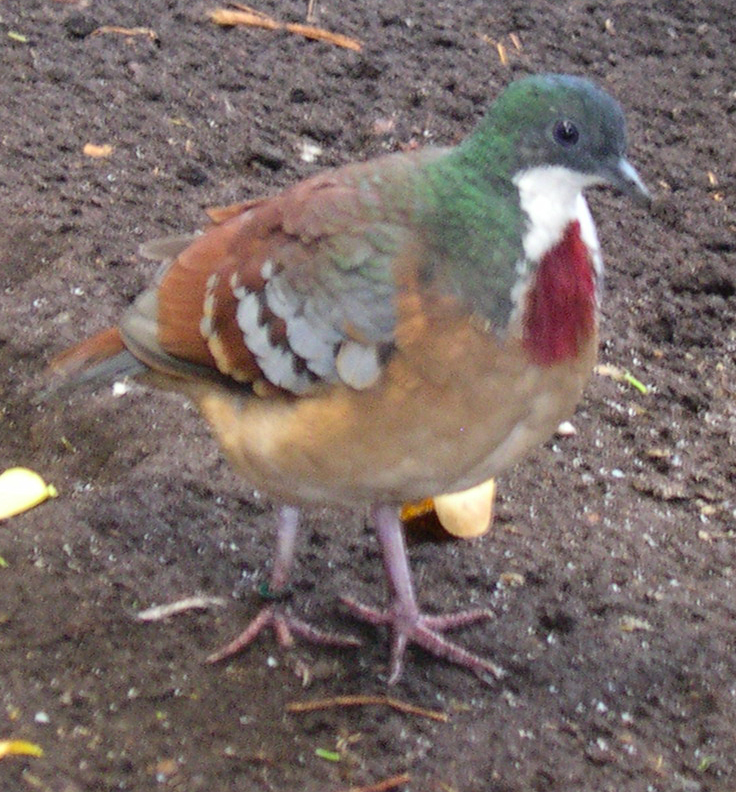The Philippines is home to some of the world’s most exotic birds. With more than 600 bird species to choose from including several species of hornbills, colorful fruit doves, rare parrots and fascinating eagles and owls — its really fun to explore and learn more about these beautiful and unique birds. Here is a list of 12 exotic birdsendemic to this “bird-paradise” country. Each country has its own unique variety of birds native to its geographical location. The Philippines is home to some of the world’s most exotic birds, too. It is believed that 185 of these species can be found only in the Philippines. Sad to say, these birds are faced with the threat of eventual death, as of deforestation & human threat. Let me show you to some of the Philippines exotic-birds


The Handsome Sunbird: Sunbird The Handsome (Aethopyga bella) is found only in the Philippines. It is one of the smallest sunbirds. Handsome songbirds inhabit subtropical or tropical moist lowland forests and subtropical or tropical moist mountain habitat. They maybe seen singly or in pairs frequenting flowering & fruiting trees. About 254 mm total length, they feed on nectar as well as small insects.

"Actenoides lindsayi -Philippines -male-8" by Doing BIG YEAR! - Spotted-Wood Kingfisher. Licensed under CC BY 2.0 via Commons.
The Spotted Wood Kingfisher: The Spotted Wood Kingfisher (Actenoides lindsayi) is endemic to the Philippines widespread in Lizon, Panay, Negros, Marinduque and Catanduanes. It inhabits subtropical or tropical moist lowland forests, perches static in dark recesses. It measures around 254 mm long & also classified as Least Concern.


The Palawan Leafbird: The Yellow-throated Leafbird (Chloropsis palawanensis) is a small bird endemic to the Palawan and the Calamian Groupin the Philippines. It commonly inhabits forest, forest edge, and scrub. With a distinctive green color, it measures to about 15.8 – 17.2 cm long. It has pointed slender bill, yellow throat, broad wings and long dull blue tail. Feeds on fruits and seeds. it is sorted as least Concern.

"Gallicolumba criniger" by Magalhães from nl. Licensed under CC BY-SA 3.0 via Commons.
The Luzon Bleeding-heart: The Luzon Bleeding-heart (Gallicolumba luzonica) known for the splash of vivid red color at the heart of their white breasts, is a ground dove endemic to the central and southern parts of Luzon, and Polillo Islands, in the Philippines. Thisspecies is found in lowland forest (below 1,400 m). Generally slate grey in color, it measures about 25 cm long and weighs about 150-200 g. It has round body, black bill, a short tail and long red legs. It feeds primarily on seeds, fallen berries, grubs, insects, and worms. The species is threatened by habitat loss, and rampant hunting. it is classified as Near Threatened. The Luzon Bleeding-heart (Gallicolumba luzonica) is one of a number of species of ground dove in the genus Gallicolumba that are called "bleeding-hearts". They get this name from a splash of vivid red colour at the centre of their white breasts. The Luzon Bleeding-heart is the species in which this feature is most pronounced, and on first sight it is hard to believe that the bird has not recently been wounded. A reddish hue that extends down the belly furthers the illusion of blood having run down the bird's front. Source: Article


"Ptilinopus occipitalis -zoo -adult-8a" by jojo nicdao from muntinlupa 20120226-DSC_2997.jpg Licensed under CC BY 2.0 via Commons.
The Yellow-breasted Fruit Dove: The Yellow-breasted Fruit Dove (Ptilinopus occipitalis), locally called Punay, is one of the five endemic fruit-dovesendemic to the Philippines. This colorful dove is widespread over the country except the Palawan region. This speciesinhabit lowland and mid elevation forests and are seen singly or in pairs. Generally, they are frugivores ( animals that eats mainly fruits). Adults reach 28-33cm in length and weigh about 204-278g. The species is Not globally threatened.
The Philippine Cockatoo: The Red-vented Cockatoo (Cacatua haematuropygia), popularly known as the Philippine Cockatoo is a critically endangered bird native to the Philippines. Its natural habitat includes mangrove forests, lowlands, forest edges and riverine. The Katala as it is locally called, measures about 33 centimeters in length with an 8.6 inches wingspan and weighs 0.29 kilogram. It is easily recognized by its all-white plumage and by the red feathers around the vent. A highly-social species, they can be seen in groups of up to 30 or more. It feeds on the seeds and fruits of wild trees. The Red-vented Cockatoo is classified Critically Endangered due to habitat loss and rampant pouching. Source: Article. 
"Cacatua haematuropygia -Palawan, Philippines-8" by jacobusmulder - Picasa Web Albums. Licensed under CC BY-SA 3.0 via Commons.















